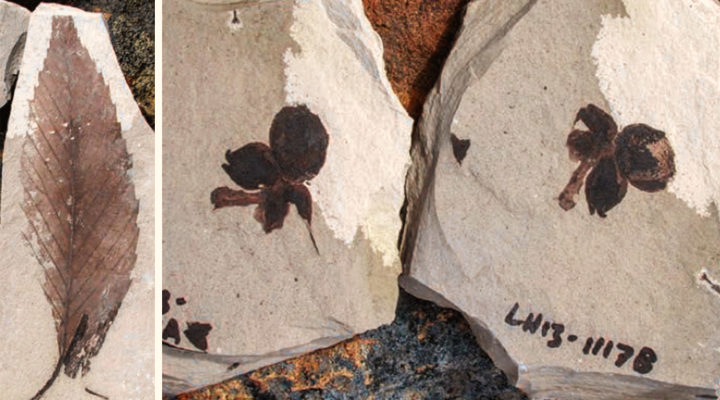EXACT AND NATURAL SCIENCES
Scientists find remains of 52-Myrs-old Castanopsis in Patagonia
It’s the first fossil record of the family of fagaceae at the southern hemisphere. One CONICET researcher participated in the finding that was published in Science.
Two decades ago, a research team that comprises geologists and paleontologists of CONICET at the Museum Egidio Feruglio (MEF) and the Pennsylvania State University, initiated a joint project to analyze and add value to the site of Laguna del Hunco, a deposit of fossil plants that are about 52 Myrs old (early Eocene) located in the northwest of the province of Chubut, which despite of being known since the 20s of the last century, it has not been sufficiently explored.
During the last 20 years, this research team has unveiled a series of valuable fossil material findings ( mainly on plants) that led them to make the hypothesis that the offpring of the flora that lived in Patagonia 52 Myrs ago survived nowadays in the forests of Southeast Asia and northeast of Australia, especially in the biogeographical region known as Australasia.
During the Eocene, these two currently distant regions were united through the Antarctic continent (millions of years before it was covered with ice), which could serve as a continental bridge for the flow of plants and animals between both areas. At that time, the climate of Patagonia was tropical or subtropical, mainly as a result of the rise of the Andes and the separation of South America from the Antarctic Peninsula, which led cold currents from Antarctica ascend through the South Atlantic. While the drastic climate change experimented by Patagonia made many groups of plants and animals disappear, those species that occupied the austral zone, managed to survive because the climatic conditions remained constant during all this time,” Rubén Cúneo, CONICET principal researcher and MEF director explains.
The recent discovery of fossil remains of plants of the genus Castanopsis (of the family of the fagaceae) in Laguna del Hunco, published today in Science, allows us to reconfirm once again the hypothesis that there used to be a migratory movement of vegetable species between Patagonia and Australasia.
“The fagaceas dominate the forests from the temperate zone of the north to tropical Asia and Malaysia. So far no fossils of this family of plants in the southern hemisphere, have been registered, hence the importance of the finding,” the researcher states.
For the researchers, the study of the Laguna del Hunco deposit allows them to obtain a high resolution image of the last ecosystem of South America when the supercontinent Gondwana still existed (before the separation in deep waters of South America, Antarctica and Australia), which coincided with what is known as the Eocene climate optimum, a time when the Earth experienced widespread global warming.
“The curious thing is that a biome with characteristics similar to that lost in Patagonia due to climate changes, can be found today in the forests of Southeast Asia and the northeast of Australia,” Cúneo explains.
This international research team has the economic support of the National Science Foundation of the United States and has been incorporated scientists from other institutions such as the Cornell University. Among other findings made in Laguna del Hunco by this international research team, it is worth mentioning the oldest fossil remains of the genus Eucalyptus, whose natural distribution is almost exclusive to Australasia, as well as that of the oldest ancestor of the tomatillos of the Solenacease family. This discoveries place Patagonia as a true milestone in the evolutionary history of vegetation in the southern hemisphere, what will surely be exponentially increased in its knowledge in the years to come.
By Miguel Faigón
About the study:
Peter Wilf. Pennsylvania State University (United States).
Kevin C. Nixon. Cornell University (United States).
María A. Gandolfo. Cornell University, United States)
N. Rubén Cúneo.Principal researcher. MEF.
